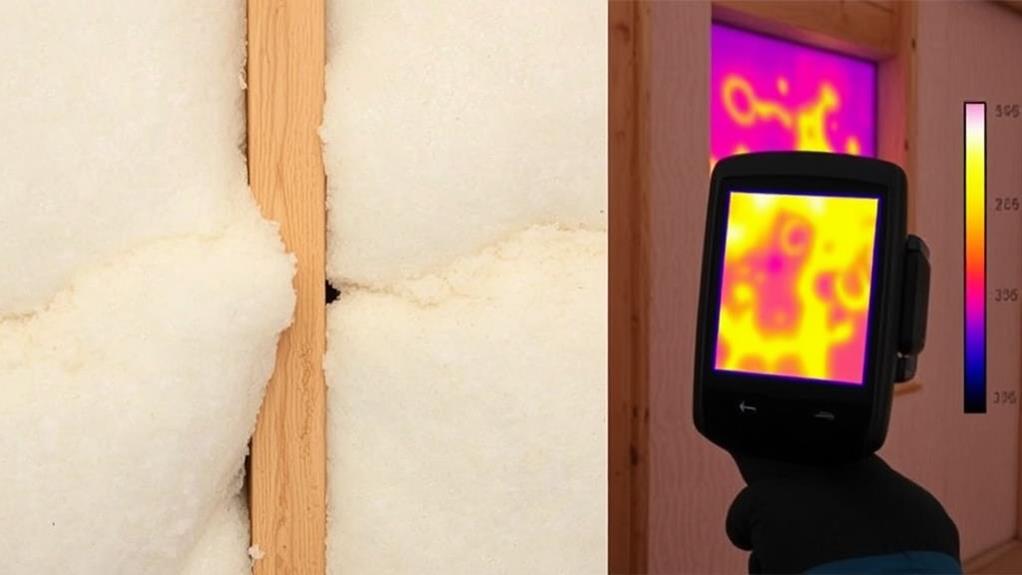When insulating your home, avoid common pitfalls that can undermine your efforts. Don't choose the wrong insulation type for your climate or neglect air sealing, which can significantly reduce effectiveness. Ensure proper installation techniques, avoiding gaps or compression that diminish R-value. Address moisture control and provide adequate ventilation to prevent mold and air quality issues. Don't skimp on insulation thickness, as inadequate coverage leads to energy loss. Consider professional energy audits to identify problem areas and prioritize improvements. By steering clear of these mistakes, you'll maximize your insulation's performance and create a more comfortable, energy-efficient home. Let's explore these errors in more detail to help you make informed decisions.
Choosing the Wrong Insulation Type
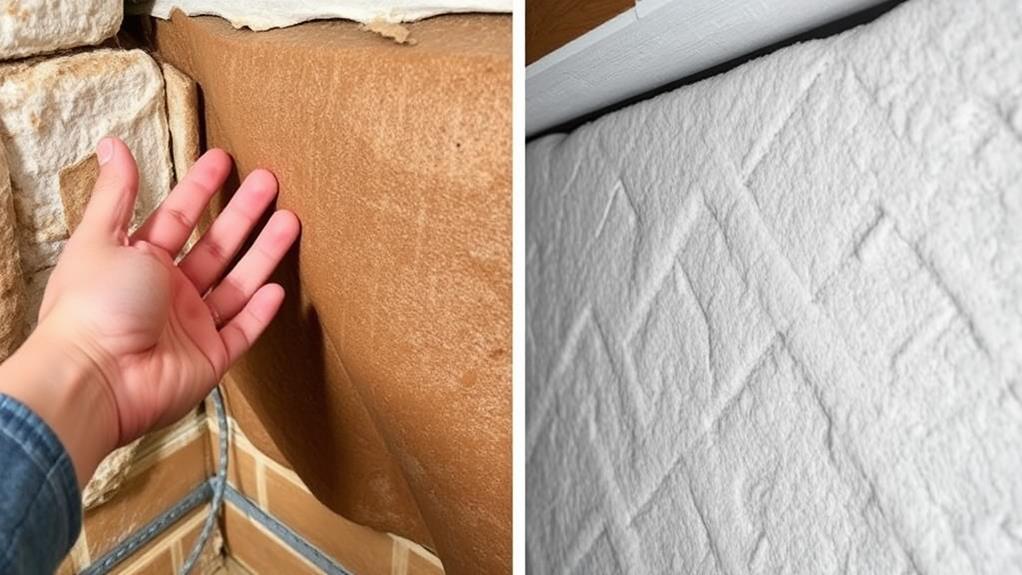
Selecting the right insulation type is crucial for maximizing energy efficiency and comfort in your home. One of the most common mistakes homeowners make is choosing insulation that's not suitable for their specific needs or climate. Each insulation material has unique properties, and what works well in one area may not be ideal in another.
For example, fiberglass is popular and cost-effective, but it's not the best choice for damp environments. In contrast, closed-cell spray foam offers excellent moisture resistance but comes at a higher cost. You'll want to consider factors like R-value, moisture resistance, fire safety, and air-sealing capabilities when making your decision.
Another pitfall is overlooking the importance of proper installation. Even the best insulation won't perform optimally if it's not installed correctly. Gaps, compression, or improper thickness can significantly reduce insulation effectiveness.
Don't forget to assess your home's specific needs. Attics, walls, and crawl spaces may require different insulation types. You should also consider your budget, long-term energy savings, and local building codes. Consulting with a professional insulation contractor can help you avoid these mistakes and ensure you choose the right insulation for your home.
Neglecting Air Sealing
A critical oversight in many insulation projects is neglecting air sealing. You might think that simply adding insulation is enough, but without proper air sealing, you're compromising the effectiveness of your entire insulation system. Air leaks can occur through small gaps, cracks, and openings in your home's structure, allowing conditioned air to escape and outdoor air to infiltrate.
To address this issue, you'll need to identify and seal these leaks before installing insulation. Start by inspecting common problem areas such as windows, doors, electrical outlets, and plumbing penetrations. Use caulk, weatherstripping, or expanding foam to seal these gaps. Don't forget about less obvious areas like attic hatches, recessed lighting fixtures, and chimney flues.
Improper Installation Techniques
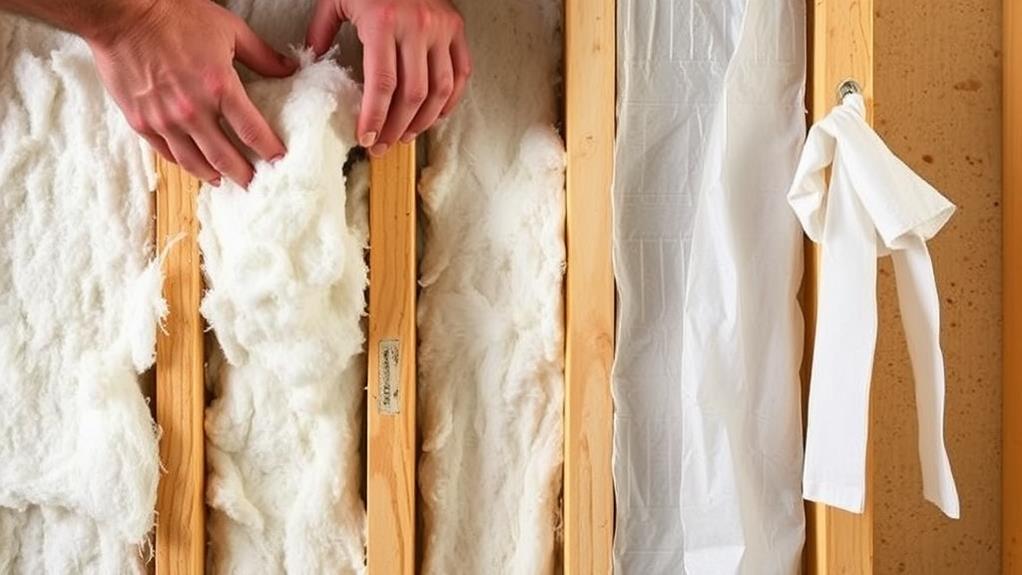
Even with proper air sealing, your insulation project can fall short if you don't use the right installation techniques. Common mistakes include compressing fiberglass batts, which reduces their effectiveness, and leaving gaps between insulation pieces. Always install batts to their full loft and cut them to fit snugly around obstacles.
When using blown-in insulation, ensure consistent coverage and depth throughout the space. Uneven distribution can create cold spots and reduce overall efficiency. For spray foam insulation, applying it at the wrong temperature or thickness can lead to poor adhesion or inadequate coverage.
Don't forget to insulate around electrical boxes and other penetrations. These areas are often overlooked but can significantly impact your home's energy performance. Additionally, be cautious when insulating around recessed lighting fixtures, as some require a safety gap to prevent overheating.
Lastly, avoid blocking soffit vents in attics when installing insulation. Proper attic ventilation is crucial for preventing moisture buildup and maintaining your roof's integrity. Use baffles to maintain airflow while still insulating effectively. By avoiding these common installation mistakes, you'll maximize your insulation's performance and energy-saving potential.
Overlooking Moisture Control
Many homeowners overlook moisture control when insulating their homes, potentially undermining the entire project. Moisture can significantly reduce insulation effectiveness and lead to mold growth, structural damage, and poor indoor air quality. To avoid these issues, you'll need to address moisture control before and during the insulation process.
First, identify and fix any existing moisture problems, such as leaky roofs, plumbing issues, or inadequate drainage around your home's foundation. Install vapor barriers on the warm side of your insulation to prevent moisture from penetrating the insulation material. In areas with high humidity, consider using moisture-resistant insulation materials like closed-cell spray foam.
Ensure proper ventilation in attics and crawl spaces to allow moisture to escape. Install soffit and ridge vents in your attic, and use vapor-permeable materials in unconditioned spaces to allow moisture to pass through. Don't forget to seal air leaks, as they can carry moisture into your insulation.
Lastly, maintain a consistent indoor humidity level between 30% and 50% using dehumidifiers or proper HVAC systems. By prioritizing moisture control, you'll maximize your insulation's effectiveness and protect your home from long-term damage.
Inadequate Insulation Thickness
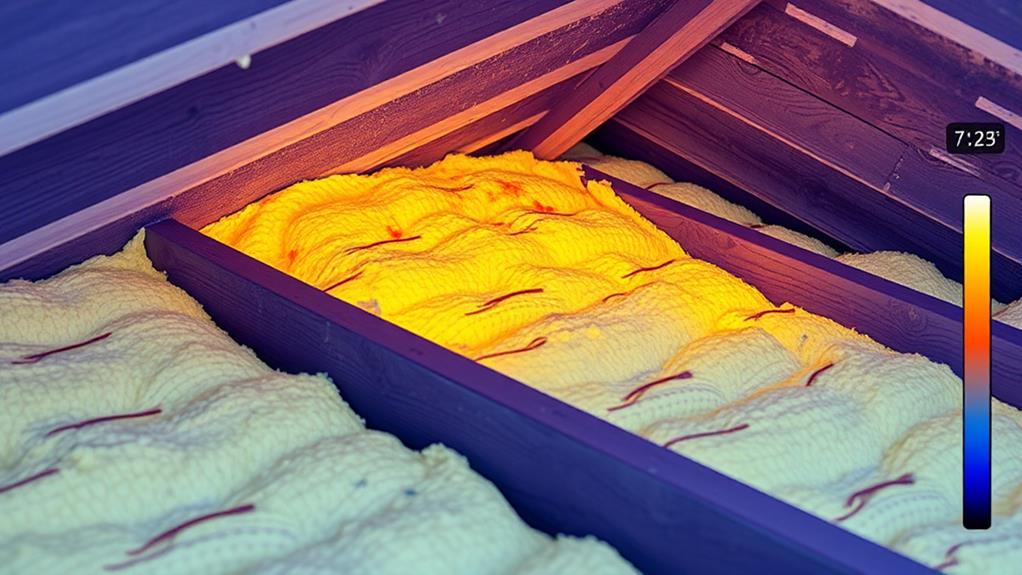
While addressing moisture control is vital, another common mistake is inadequate insulation thickness. You might think that any insulation is better than none, but skimping on thickness can significantly reduce its effectiveness. Proper insulation thickness is crucial for maintaining energy efficiency and comfort in your home.
When you don't use enough insulation, heat can easily transfer through walls, ceilings, and floors. This leads to higher energy bills and uncomfortable living spaces. To avoid this, consult local building codes and energy efficiency guidelines for recommended R-values in your area. Remember, R-value measures insulation's thermal resistance, and higher values indicate better performance.
Don't fall into the trap of thinking you can compensate for thin insulation by compressing thicker materials. Compression actually reduces insulation's effectiveness. Instead, use the appropriate thickness for each type of insulation material. For example, fiberglass batts should fit snugly between studs without being squeezed.
If you're retrofitting an existing home, consider adding insulation to reach recommended levels. In new construction, ensure your contractor installs the correct thickness from the start. By avoiding inadequate insulation thickness, you'll create a more energy-efficient and comfortable living environment.
Ignoring Ventilation Requirements
Proper ventilation is often overlooked when insulating a home, but it's crucial for maintaining a healthy living environment. When you focus solely on sealing every nook and cranny, you risk trapping moisture and pollutants inside. This can lead to mold growth, poor indoor air quality, and even structural damage over time.
To avoid these issues, ensure you're balancing insulation with adequate ventilation. Install exhaust fans in high-moisture areas like bathrooms and kitchens. Don't forget to vent these fans outside, not just into your attic.
In the attic itself, maintain proper airflow with soffit and ridge vents. This helps regulate temperature and moisture levels, preventing ice dams in winter and excessive heat buildup in summer.
When insulating walls, consider using breathable materials or including a vapor barrier on the warm side of the insulation. This allows moisture to escape while still maintaining thermal efficiency. Don't seal off existing vents or block soffit vents with insulation.
If you're unsure about your home's ventilation needs, consult a professional. They can help you strike the right balance between energy efficiency and proper airflow, ensuring your well-insulated home remains healthy and comfortable.
Skipping Professional Energy Audits
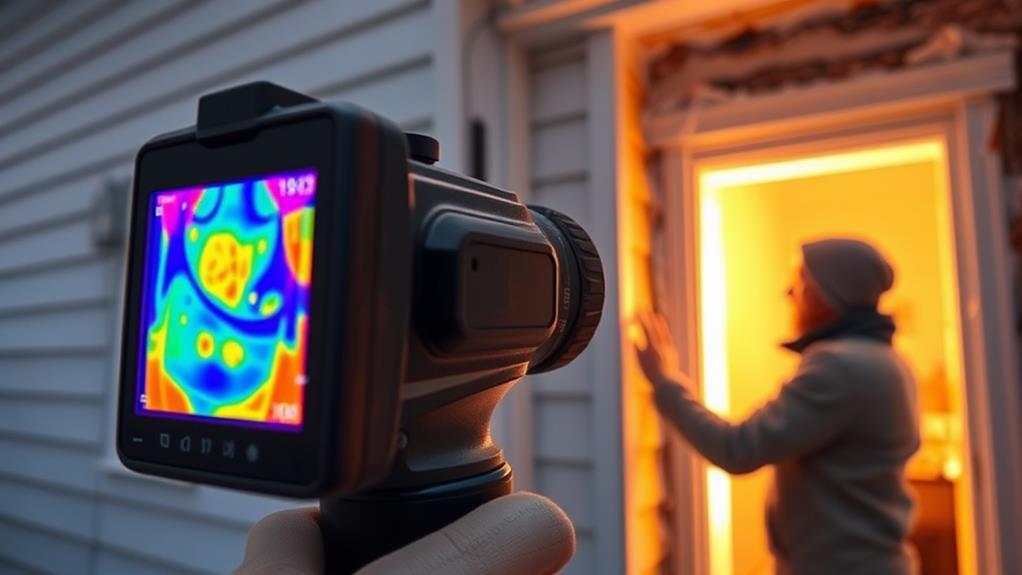
Despite the temptation to dive straight into insulation projects, skipping a professional energy audit can lead to costly mistakes and missed opportunities. You might think you've identified all the problem areas in your home, but a trained expert can spot issues you've overlooked. They'll use specialized equipment like infrared cameras and blower door tests to pinpoint air leaks, insulation gaps, and thermal bridges that aren't visible to the naked eye.
An energy auditor will provide a comprehensive report detailing your home's energy performance and recommend the most cost-effective improvements. This information helps you prioritize your insulation efforts and avoid wasting money on unnecessary upgrades. They'll also consider factors like moisture control and indoor air quality, ensuring your insulation project doesn't create new problems.
Conclusion
Don't let your home's comfort slip through the cracks! By avoiding these common insulation pitfalls, you'll create a cozy nest that's energy-efficient and cost-effective. Remember to choose the right insulation, seal air leaks, install properly, control moisture, and ensure adequate thickness. Don't forget about ventilation and consider a professional energy audit. With these tips in mind, you'll be well on your way to a snug and efficient home.
